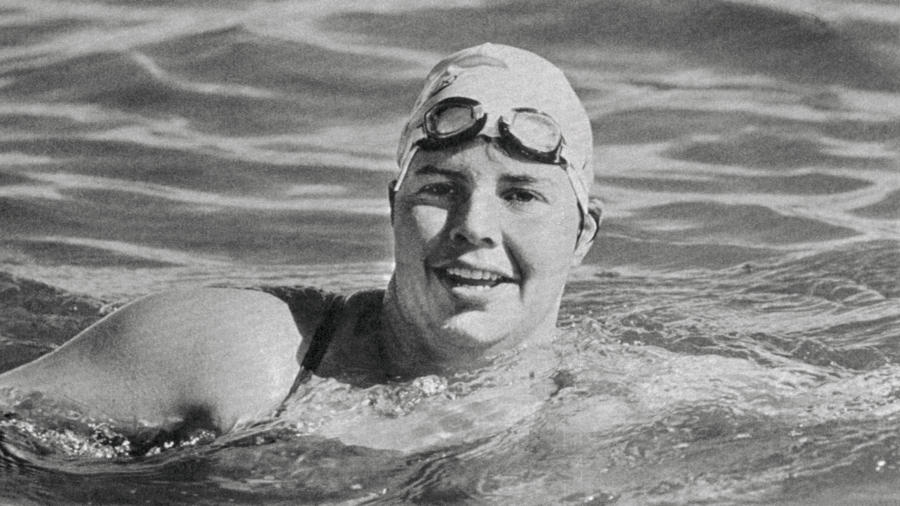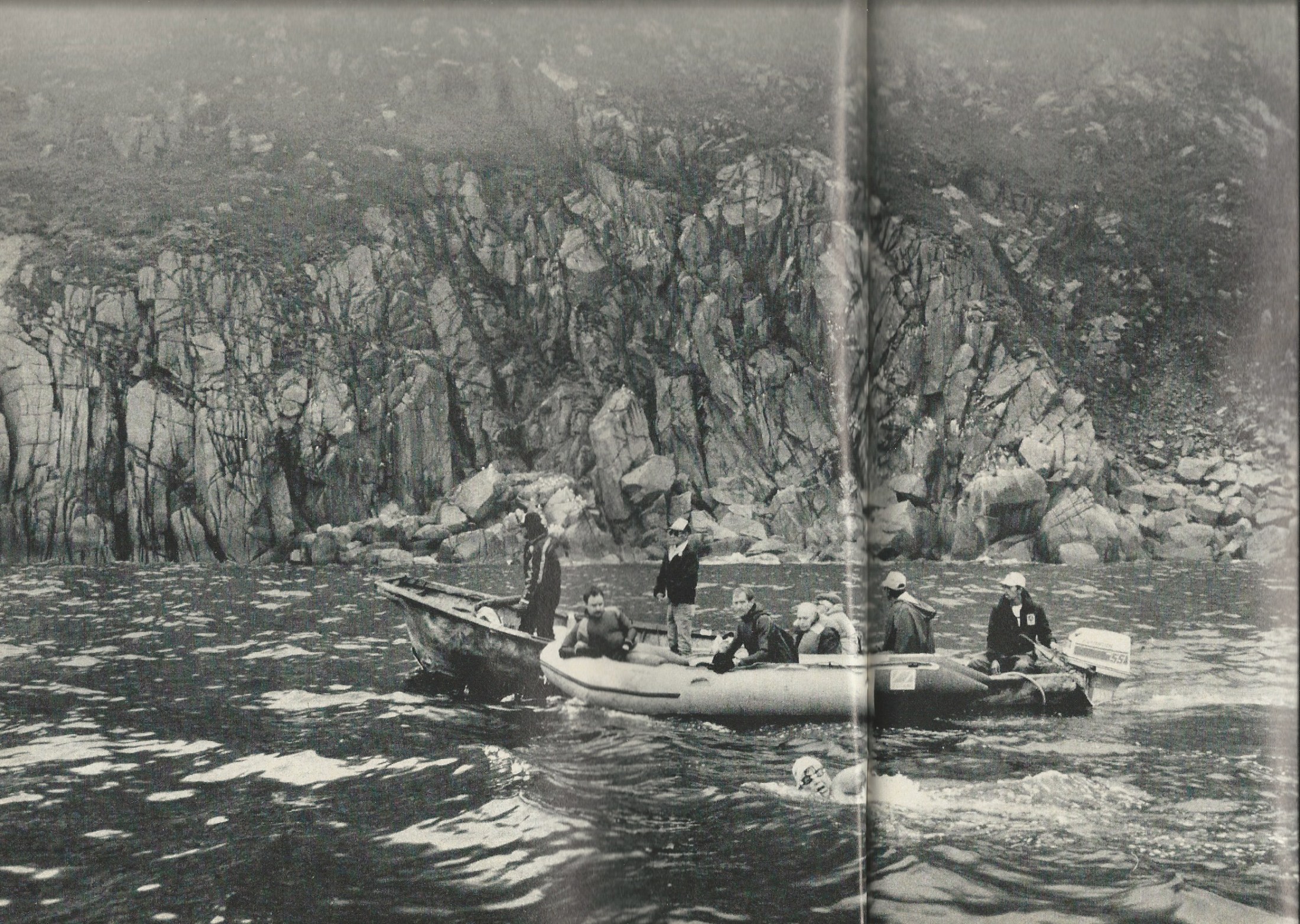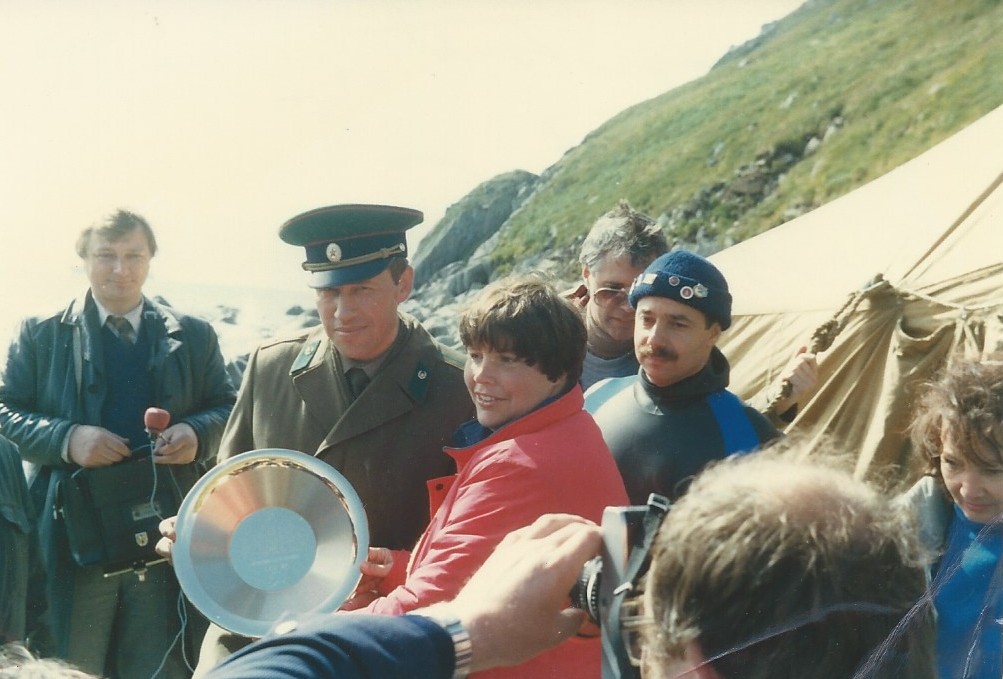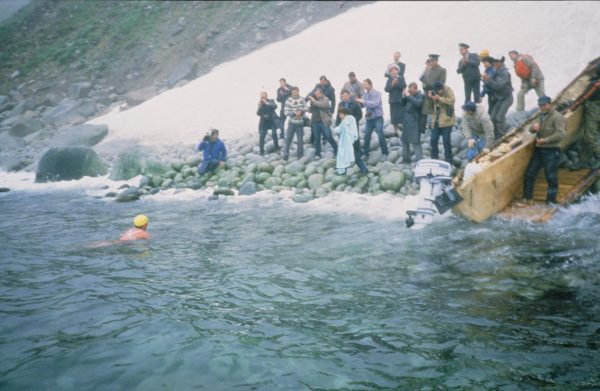The Swim
On August 7, 1987, American female athlete Lynne Cox swam through the freezing cold waters of the Bering Strait from Alaska to the shores of the Soviet Union. This had never been done before, but she saw the importance of showing how close the two countries truly were to one another- right at the height of the Cold War. Both Americans and Soviets were on edge at this time, making the swim a historic feat that broke the barrier between two countries who had been at a war of ideals for years.

Lynne Cox in the waters of the Bering Strait. Photo from Getty Images, 1987.
Cox had to petition Mikhail Gorbachev, the leader of the Soviet Union, to open the border. It took eleven years for permission to be granted for the swim. This was the first time in 48 years that the border between the United States and the Soviet Union had been opened and symbolized a major breakthrough in relations during this period of the Cold War.
Ever since Lynne Cox was young, she was more comfortable swimming in cold water. However, this swim was unlike anything she, or anyone else, had done before. The temperature of the water on the morning of August 7, 1987 was 38 degrees farenheit. For context, most trainers advise professional athletes to spend no longer than twelve minutes in ice baths at 41 degrees to avoid permanent muscle damage. Against the currents, extremely cold temperatures, and 2.7 miles of water, Cox swam for 2 hours and 5 minutes straight- without stopping.
Lynne Cox, who swam in only a race suit, swim cap, and goggles, was accompanied by a team of doctors, coaches, reporters, Eskimo villagers, and even the Soviet Navy. Because this swim was considered extremely dangerous, her internal temperature was constantly being monitored and a rescue crew was prepared in case of disaster. Though the distance between the two countries was only 2.7 miles, the crew reported that Cox most likely swam about four to six miles due to the foggy conditions, which didn't allow for a steady course. Within the first minutes of the swim, Lynne Cox, in an interview with NPR, recounted that her "hands turned grey in the ice cold water and [her] arms and legs felt like boards."
When Lynne Cox finally made it to shore, she was welcomed by a warm Soviet embrace- though her internal body temperature was at 94 degrees farenheit, just on the brink of hypothermia. There were people from all over the country who had traveled by helicopter to greet her. They had set up warm tents along with tea and snacks for Cox and her team. As she and her team met many people from all parts of the Soviet Union, it was easy to see that they were not all that different from eachother. Overall, this historic swim showed how close the two countries were to one another and was a symbol of peace during a time of hostility.


